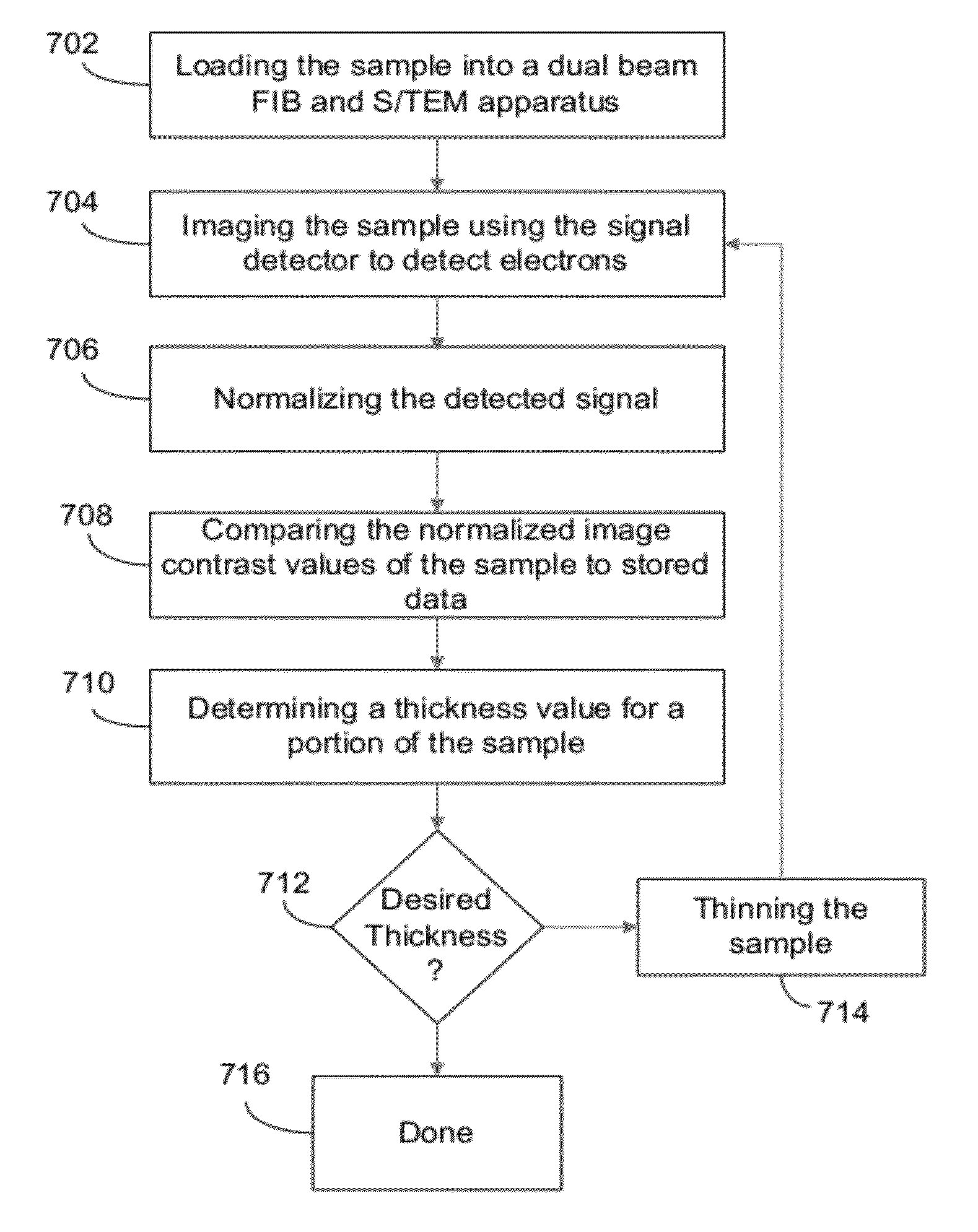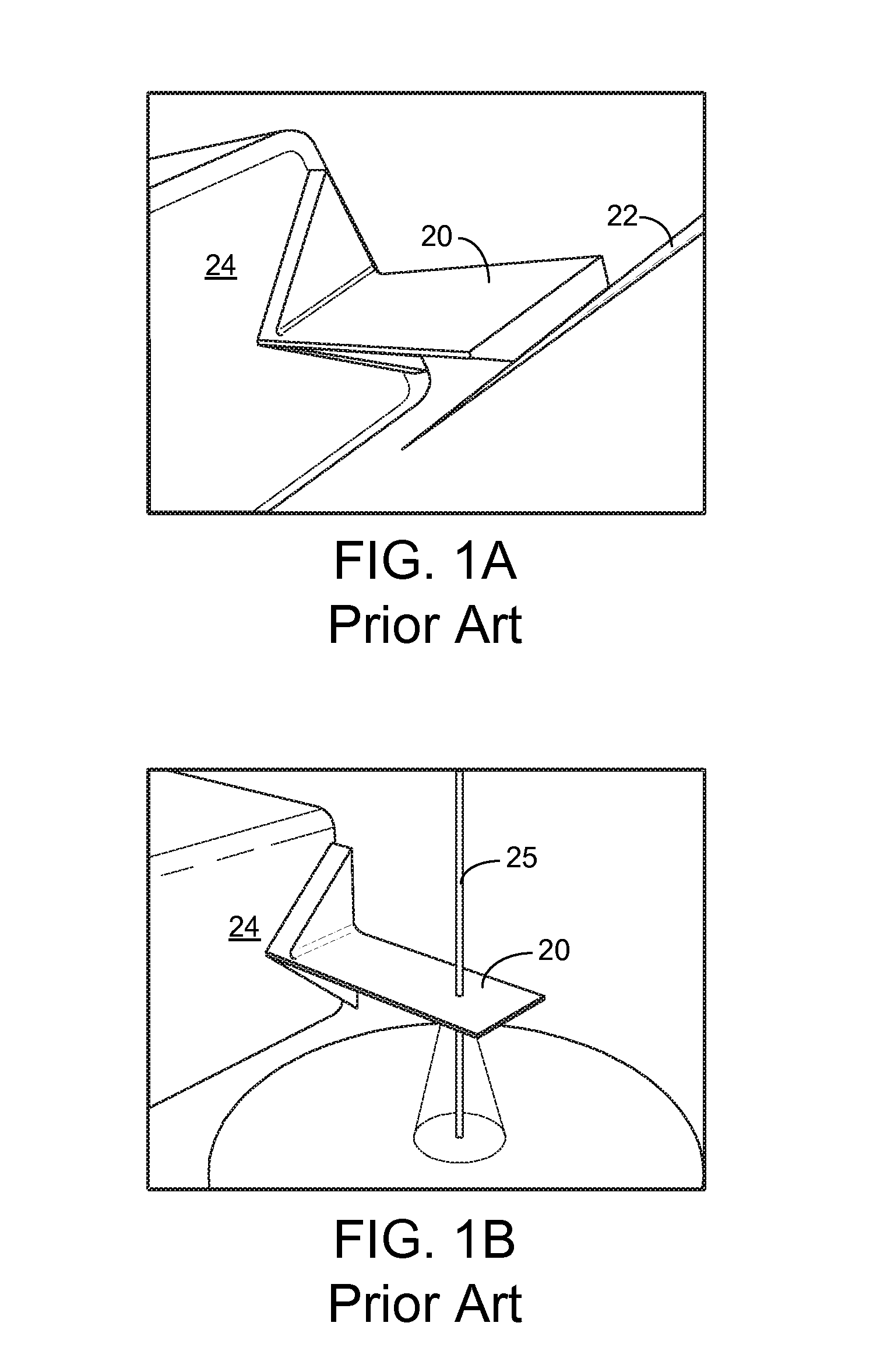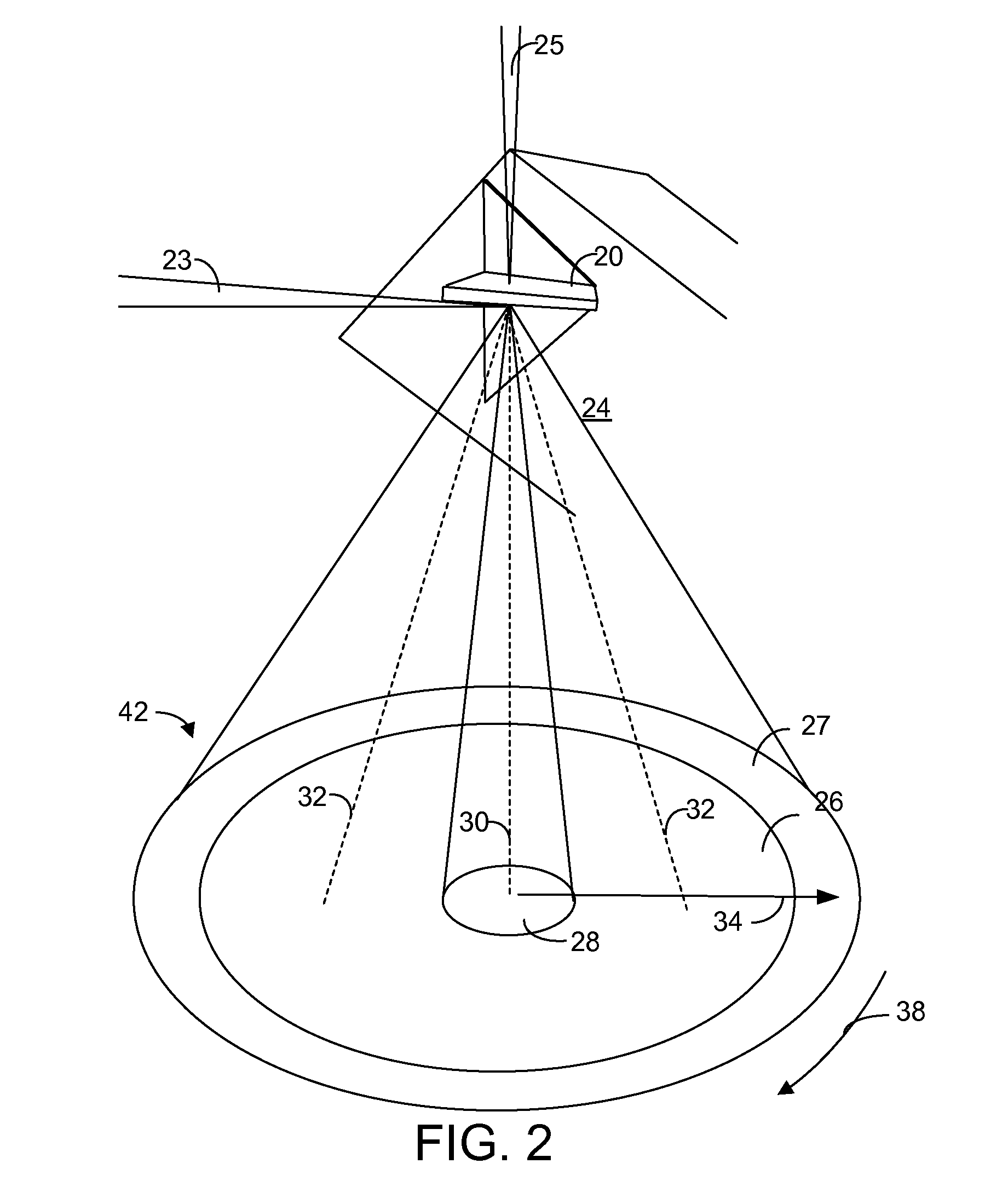Measurement and endpointing of sample thickness
a technology of transmission electron microscope and endpoint, which is applied in the direction of mechanical measuring arrangement, calibration apparatus, instruments, etc., can solve the problems of inability to accurately determine the endpoint of lamella creation, the complexity of the device grows, and the size of the device shrinks, so as to increase the throughput and reproducibility of tem sample creation
- Summary
- Abstract
- Description
- Claims
- Application Information
AI Technical Summary
Benefits of technology
Problems solved by technology
Method used
Image
Examples
Embodiment Construction
[0027]Preferred embodiments of the present invention provide improved methods for lamella creation. The use of a SEM-S / TEM detector in the dual-beam FIB / SEM allows a sample to be thinned using the FIB, while the STEM signal is used to monitor sample thickness. By mounting the sample on a pivoting sub-stage (a “flipstage”) it is possible to orient the sample for FIB thinning and then to position it for SEM-S / TEM imaging without breaking vacuum, enabling fast inspection of the thinned sample and even direct monitoring of the thinning process. Preferably, the electron beam and the ion beam can be operated at the same time (or intermittently) so thickness measurement is available during the thinning process.
[0028]A preferred embodiment of the present invention can measure the thickness of or create S / TEM samples by using a precise endpoint detection method that is reproducible and suitable for automation. Preferred embodiments also enable automatic endpointing during TEM lamella creatio...
PUM
| Property | Measurement | Unit |
|---|---|---|
| thick | aaaaa | aaaaa |
| angle | aaaaa | aaaaa |
| angle | aaaaa | aaaaa |
Abstract
Description
Claims
Application Information
 Login to View More
Login to View More - R&D
- Intellectual Property
- Life Sciences
- Materials
- Tech Scout
- Unparalleled Data Quality
- Higher Quality Content
- 60% Fewer Hallucinations
Browse by: Latest US Patents, China's latest patents, Technical Efficacy Thesaurus, Application Domain, Technology Topic, Popular Technical Reports.
© 2025 PatSnap. All rights reserved.Legal|Privacy policy|Modern Slavery Act Transparency Statement|Sitemap|About US| Contact US: help@patsnap.com



